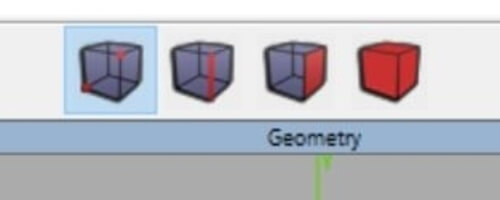
But if you want to create very small sculptures, you can do this by creating your model eccentrically and then unchecking this option. The default setting is that re-centering is allowed. It allows the exporter to easily select a better coordinate system for creating the sculpture. Re-centering does not change your Wings model. Allow recentring? Without this option, accuracy can be compromised due to quantization errors if your model is not aligned with the intersection of the major axes, as floating-point numbers are mapped to the 8-bit integers required by SL.At this point, however, a 64×64 bitmap combined with the lossless upload option is generally a better choice. The main reason for this is that using a 128×128 bitmap for quite some time after the introduction of Sculpties was the best way to minimize the compression artifacts generated by SL, regardless of the resolution of your model. The size of the sculpty bitmap is not necessarily tied to the size of the model. If you click anywhere to the left of the field, Wings will export with the default option values. To access these options, click the box on the right side of the File/Export/SL Sculpties menu. The Ex- and Importer now has a number of options that allow the SL sculpty to better match the Wings model (or vice versa). The Wings 3D plugin fully supports all four topologies. At the time of writing, SL has incomplete support for the planar topology (one surface fracture), cylinder (two surface fractures), and torus (no surface fractures, but a hole in the solid). In the original version of sculpties, SL supported only sculpties with a “spherical” topology (that is, the surface has no fractures and the solid has no holes). The big advantage of starting with one of the templates instead of creating a sphere with the Wings command is that the templates contain UV maps that allow you to create and preview sculpty textures with only Wings and any 2D painting program. The only disadvantage of triangular surfaces is that they make the model look more “present”. four-sided surfaces, the triangular Wings surfaces allow for better adaptation to the way SL presents its model. Unless you know exactly which 32 nodes they are, you risk simply being disappointed because the details of your model are based on some of those 2950+ nodes that are ignored when they come into SL. Of the nearly 3,000 additional nodes in a 64×63 mesh, only 32 of them actually have an impact on the sculpture in SL. There are very few advantages in modeling with a 64×63 mesh and there are considerable disadvantages. These templates are named after the number of segments and layers and whether the surfaces are represented by triangles or quadrangles.įor most models 32x31tri.wings is a good choice.
#Import obj object into wings 3d zip
wings template files from the plugin zip file. To create a model, first open one of the.



The Wings 3D plugin was written by Omei Turnbull and can be downloaded for free. Wings 3D can then be used to add additional details that are not possible in these simpler programs. This allows Wings 3D to read sculpty files created in special sculpty programs like Rokuro, Tokuroten or Sculptypaint.

In the case of Wings 3D, the Exporter plugin is also an Importer. There is no support in Wings for animation.Īn Exporter is a plugin for Wings that creates an SL-compatible texture file from the. Wings 3D offers a wide range of modeling tools, a customizable user interface, support for lights and materials, and an integrated auto UV mapping feature. Wings 3D is currently maintained by Dan and Richard with the help of the large community. Richard Jones was in charge of Wings and programmed many new features between 20. Originally inspired by Nendo and Mirai of Izware, Wings 3D has been developed since 2001, when Björn Gustavsson and Dan Gudmundsson first started the project.


 0 kommentar(er)
0 kommentar(er)
